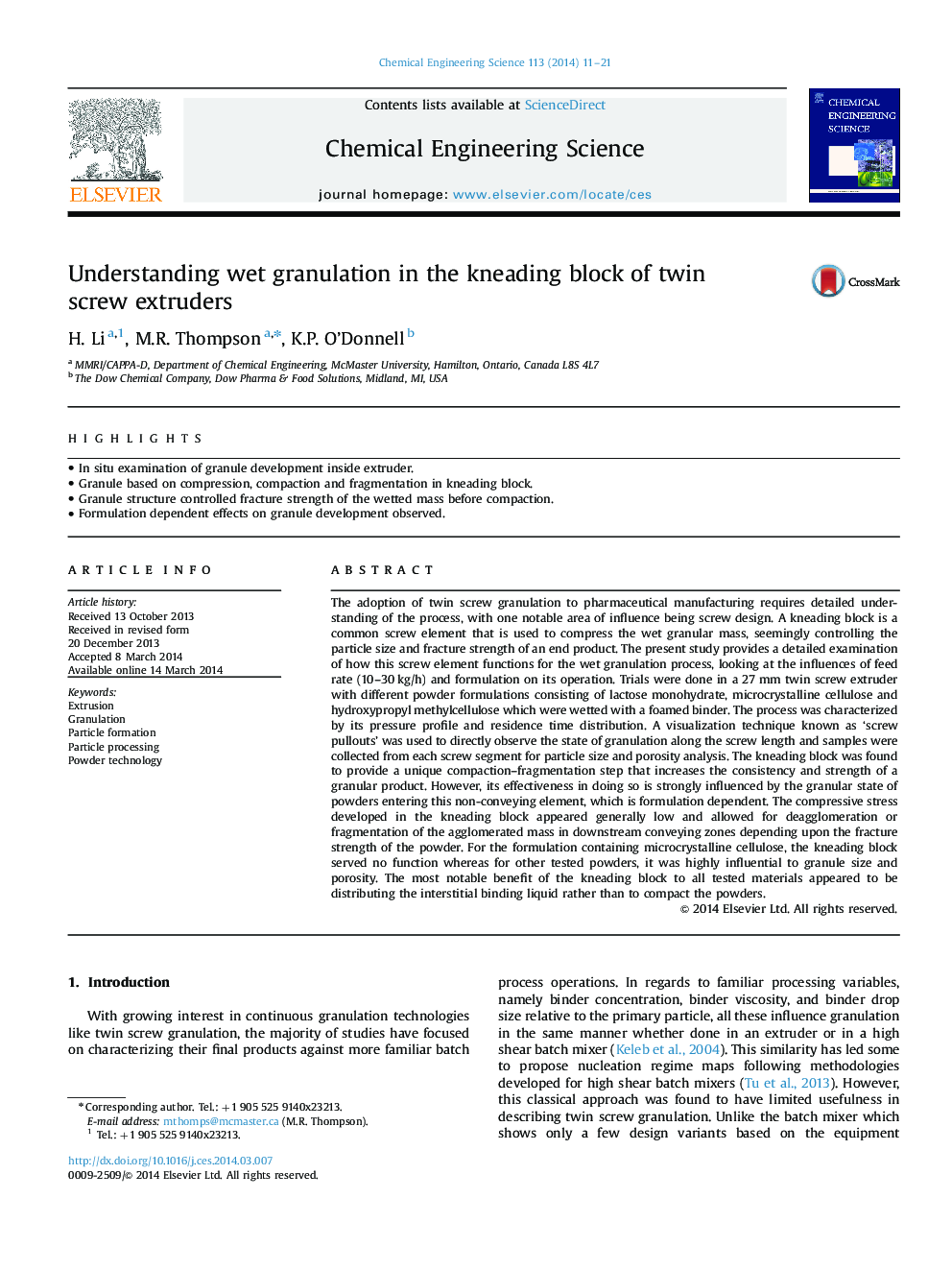| کد مقاله | کد نشریه | سال انتشار | مقاله انگلیسی | نسخه تمام متن |
|---|---|---|---|---|
| 6591265 | 456869 | 2014 | 11 صفحه PDF | دانلود رایگان |
عنوان انگلیسی مقاله ISI
Understanding wet granulation in the kneading block of twin screw extruders
ترجمه فارسی عنوان
درک گرانولیت مرطوب در بلوک ساندویچ اکسترودر پیچ دوقلو
دانلود مقاله + سفارش ترجمه
دانلود مقاله ISI انگلیسی
رایگان برای ایرانیان
کلمات کلیدی
اکستروژن، گرانوله، تشکیل ذرات، پردازش ذرات، تکنولوژی پودر،
موضوعات مرتبط
مهندسی و علوم پایه
مهندسی شیمی
مهندسی شیمی (عمومی)
چکیده انگلیسی
The adoption of twin screw granulation to pharmaceutical manufacturing requires detailed understanding of the process, with one notable area of influence being screw design. A kneading block is a common screw element that is used to compress the wet granular mass, seemingly controlling the particle size and fracture strength of an end product. The present study provides a detailed examination of how this screw element functions for the wet granulation process, looking at the influences of feed rate (10-30Â kg/h) and formulation on its operation. Trials were done in a 27Â mm twin screw extruder with different powder formulations consisting of lactose monohydrate, microcrystalline cellulose and hydroxypropyl methylcellulose which were wetted with a foamed binder. The process was characterized by its pressure profile and residence time distribution. A visualization technique known as 'screw pullouts' was used to directly observe the state of granulation along the screw length and samples were collected from each screw segment for particle size and porosity analysis. The kneading block was found to provide a unique compaction-fragmentation step that increases the consistency and strength of a granular product. However, its effectiveness in doing so is strongly influenced by the granular state of powders entering this non-conveying element, which is formulation dependent. The compressive stress developed in the kneading block appeared generally low and allowed for deagglomeration or fragmentation of the agglomerated mass in downstream conveying zones depending upon the fracture strength of the powder. For the formulation containing microcrystalline cellulose, the kneading block served no function whereas for other tested powders, it was highly influential to granule size and porosity. The most notable benefit of the kneading block to all tested materials appeared to be distributing the interstitial binding liquid rather than to compact the powders.
ناشر
Database: Elsevier - ScienceDirect (ساینس دایرکت)
Journal: Chemical Engineering Science - Volume 113, 3 July 2014, Pages 11-21
Journal: Chemical Engineering Science - Volume 113, 3 July 2014, Pages 11-21
نویسندگان
H. Li, M.R. Thompson, K.P. O'Donnell,
